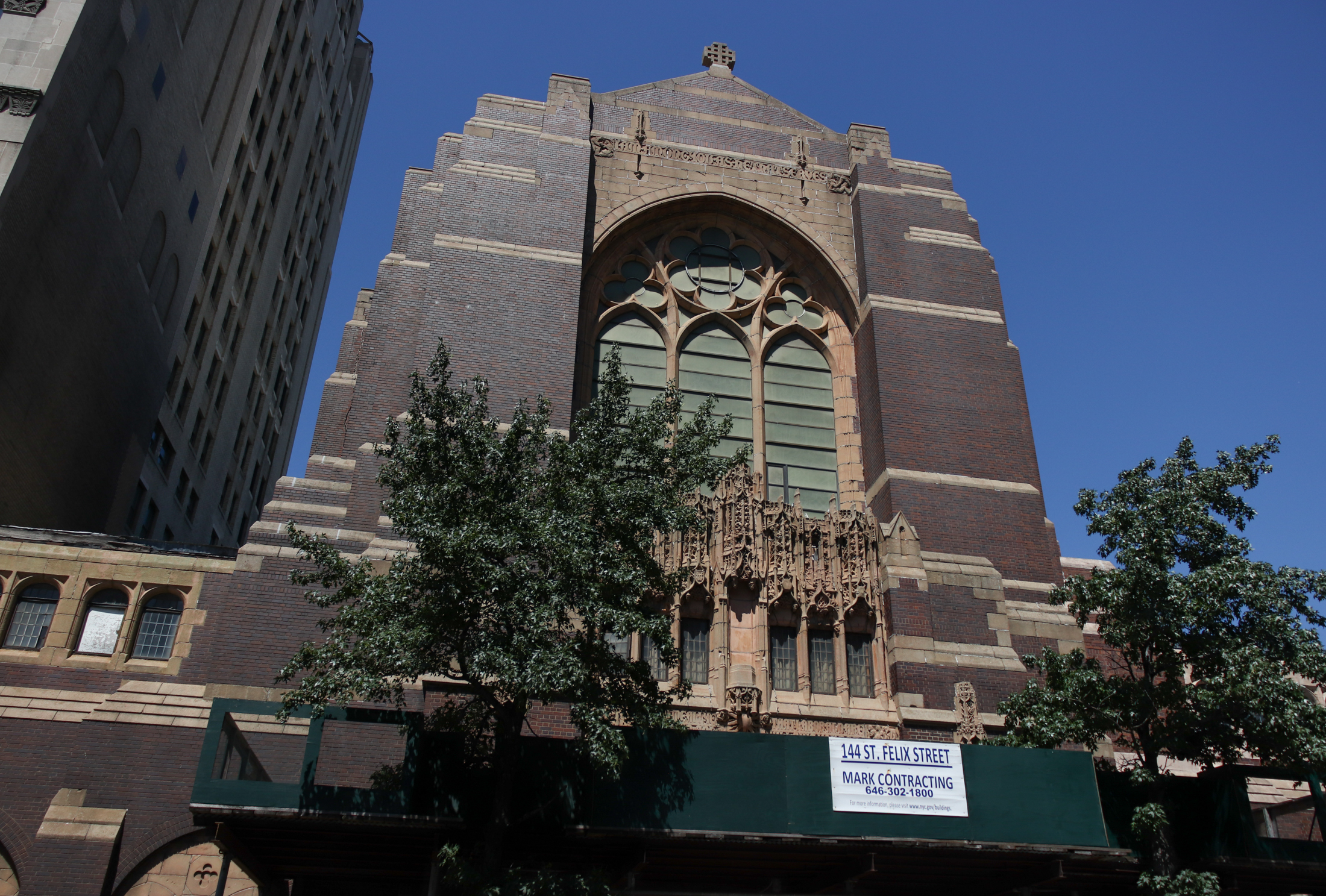Building of the Day: 163-171 Carlton Avenue
Brooklyn, one building at a time. Name: Originally W.W. DeBevoise Candy Factory, now apartments Address: 163-171 Carlton Avenue Cross Streets: Myrtle and Willoughby Avenue Neighborhood: Fort Greene Year Built: 1901 Architectural Style: Victorian factory Architect: Factory: H.E. Funk Other buildings by architect: factories and other commercial buildings in Manhattan and Brooklyn Landmarked: No The story:…

Brooklyn, one building at a time.
Name: Originally W.W. DeBevoise Candy Factory, now apartments
Address: 163-171 Carlton Avenue
Cross Streets: Myrtle and Willoughby Avenue
Neighborhood: Fort Greene
Year Built: 1901
Architectural Style: Victorian factory
Architect: Factory: H.E. Funk
Other buildings by architect: factories and other commercial buildings in Manhattan and Brooklyn
Landmarked: No
The story: The DeBevoise family is one of Brooklyn’s oldest Dutch families. They came here with the Lefferts, Remsen, Lotts and other early families back in the 1600s. Carel (Carl) DeBevoise was the first schoolmaster in Flatbush in 1661. Throughout the years, subsequent DeBevoise family members settled in all parts of Brooklyn, and had all kinds of occupations. They were farmers, bankers, real estate men and so on, and one, William W. DeBevoise, was a candy maker.
W.W. DeBevoise Company specialized in chocolate and other candies. The northern reaches of Fort Greene and Clinton Hill, bordering on Wallabout, were prime areas for candy makers and other food businesses, due in great part to the proximity to both Wallabout and its wholesale produce and food markets, food wholesalers, and the nearby sugar refineries just down the road in Williamsburg.
DeBevoise had already been in business for about ten years when he had this factory built in 1901. He would later incorporate the older stable building next door into the factory. DeBevoise specialized in what was then called penny candies and five cent bars, and was one of the first Brooklyn manufacturers to make these confections. His signature candy bar was a chocolate bar with peanuts. He patented the formula for the bar in 1912, saying in his application that his process of combining the chocolate and the nuts so that the nuts stayed under the surface of the bar was unique. Apparently so, as the patent was granted.
In 1918, a garage was added to the factory complex, presumably to hold his delivery trucks on the ground floor. The company continued to grow, and DeBevoise was rich. He lived in a large mansion at 1000 Ocean Avenue in Flatbush, and had a summer home in Riverhead, LI.
In 1918, he also got into some trouble with false advertising. His “Chocolate and Peanut Double Wonders” bars were advertised as being made with chocolate and peanuts. Testing revealed that the bars were in fact made of artificial chocolate made with cottonseed oil, real chocolate and peanuts. He was taken to court, and had to change his advertising and pay a $25 fine.
William DeBevoise died in 1930 at the age of 71. Around three years before, he had made arrangements to retire, and sold his company to a group of his employees. His old head of sales became president of the company. I don’t know how long they stayed in business, but they have long disappeared from memory, and the Double Wonders are no more.
In 1998, developer Shaya Boymelgreen bought the building had converted the spaces over to loft style apartments. Today there are 32 units in the building. GMAP
(Photograph:Sara Westcott for Property Shark)
UPDATE: I originally included the Marshall J. Morrill designed stable in the left corner of the photo as part of this complex. It was not. The stable was designed by Morrill for Meyer Feuchtwanger, and was the topic of a previous Building of the Day. My apologies for any confusion. The stable, which is 159 Carlton Avenue, was always a separate entity, although it was for a time a candy factory, as well, but owned by Franklin W. Flagler. Please see the BOTD linked here for more details. Thanks to Andrew Dolkart for setting me straight. After all, he wrote the report on the stable for the National Register. (Bows humbly.)











What's Your Take? Leave a Comment